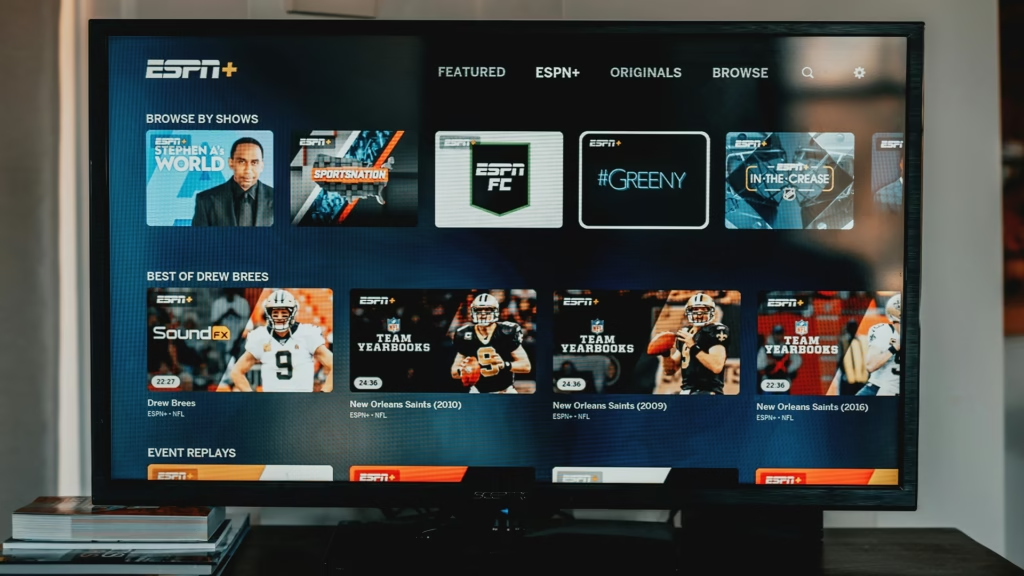In 2001, two casino executives bought the Ultimate Fighting Championship for $2 million. The sport was banned in 36 states, cable companies refused to broadcast it, and nobody thought mixed martial arts had a future. Fast forward to 2025, and UFC is now part of TKO Group Holdings, projected to hit $4.6 billion in revenue this year, with UFC alone worth $12.1 billion.
That’s a 605,000% return in 24 years.
But here’s the controversial twist: while UFC generated $775 million in revenue in just the first half of 2025 and TKO’s stock has soared 72% year-over-year, the fighters who actually bleed in the Octagon still take home just 15-18% of total revenue. Compare that to NBA, NFL, and NHL athletes who get 48-50% through union agreements, and you’ll see why UFC’s business model is both brilliant and brutally criticized.
This is how UFC built one of the most profitable sports organizations in the world by eliminating competition, restricting fighter earnings, and perfecting the art of maximum revenue with minimum payroll.
The $2 Million Gamble That Built an Empire
From “Human Cockfighting” to Legitimacy
By 2001, UFC was dying. Senator John McCain called it “human cockfighting,” it was banned in 36 states, and nobody would touch it. That’s when Lorenzo and Frank Fertitta, who ran Station Casinos in Las Vegas, bought UFC for $2 million through their company Zuffa LLC and installed Dana White as president.
What the Fertittas did to save UFC:
- Implemented Unified Rules of Mixed Martial Arts
- Introduced proper weight classes and mandatory gloves
- Got state-by-state athletic commission approval
- Invested over $40 million of their own money while losing money
- Launched The Ultimate Fighter reality show on Spike TV in 2005
The reality show changed everything. By 2006, UFC was profitable. By 2010, it was a phenomenon with stars like Ronda Rousey and Conor McGregor becoming mainstream celebrities.
The $4 Billion Sale That Broke Sports Records
In 2016, WME-IMG (later renamed Endeavor Group Holdings) bought UFC for $4.025 billion in the largest sports acquisition in history. The Fertitta brothers walked away with a 72% annual return on their investment.
The deal breakdown:
- Purchase price: $4.025 billion
- Buyers: Endeavor, Silver Lake Partners, KKR, MSD Capital
- Dana White: Kept his 9% stake, stayed as president
- Endeavor’s plan: Global expansion + maximize media deals
Under Endeavor, UFC signed a $1.5 billion five-year ESPN deal in 2018 and nearly doubled revenue within seven years.
The TKO Merger: Creating a $27 Billion Combat Sports Giant
In April 2023, Endeavor CEO Ari Emanuel dropped a bombshell: UFC would merge with WWE to form TKO Group Holdings. The deal closed in September 2023, and by 2025, TKO has evolved into one of the most valuable sports entertainment companies on Earth.
The TKO empire in 2025
- Total company valuation: $27+ billion
- UFC value: $12.1 billion
- WWE value: Integrated as co-flagship
- Ownership: Endeavor (60%), public shareholders (40%)
- Stock ticker: TKO on NYSE (up 72% year-over-year as of Q1 2025)
- Leadership: Ari Emanuel (CEO), Dana White (UFC CEO), Nick Khan (WWE President)
February 2025: The $3.25 Billion Expansion
TKO didn’t stop at UFC and WWE. In February 2025, the company acquired three major assets from parent company Endeavor in a $3.25 billion all-stock deal:
- IMG: Global sports marketing agency
- On Location: Premium experiential hospitality firm
- Professional Bull Riders (PBR): Bull riding touring competition
Why the merger and acquisitions made business sense
Revenue Explosion: TKO’s numbers tell the story:
- Q1 2025: $1.27 billion total revenue (4% YoY increase)
- Q2 2025: $1.308 billion total revenue (10% YoY increase)
- Full year 2024: $2.804 billion
- 2025 projected: $4.63-4.69 billion (with new acquisitions)
UFC specifically generated $359.7 million in Q1 and $415.9 million in Q2 2025, driven by record Saudi Arabia events, increased PPV sales, and new partnerships with Meta and Monster Energy.
Media Rights Power: The $7.7 billion Paramount deal starting in 2026 guarantees massive revenue regardless of event quality.
Global Reach: Combined fan base of 1+ billion people globally across 210+ countries.
The merger essentially created a combat sports and entertainment monopoly. With UFC dominating MMA, WWE dominating wrestling, and now IMG controlling sports marketing, TKO controls multiple leverage points in the sports entertainment ecosystem.
How UFC Makes Its Billions: The Revenue Machine
UFC generated $775 million in the first half of 2025 alone, on track for over $1.5 billion annually. Here’s where the money comes from:
1. Pay-Per-View Events (Until 2026)
- Revenue per major event: $50-100 million
- Annual PPV events: 12-13 per year
- Price: $79.99 per event on ESPN+
- Record: UFC 229 (McGregor vs. Khabib) generated 2.4 million buys = $180M+ in revenue
- The catch: Only superstar fights hit 1M+ buys. Most events do 200K-400K buys.
- Big change: UFC will exit PPV entirely in 2026 when the Paramount deal kicks in
2. Media Rights (The Real Money)
- Current ESPN deal: $300M annually (ends 2025)
- New Paramount deal: $7.7 billion over 7 years = $1.1B annually (starting 2026)
- International deals: Hundreds of millions from BT Sport (UK), DAZN (Europe), Sony Sports (India)
- Game changer: Guaranteed money regardless of event quality
- WWE parallel: WWE signed a $1.6B five-year deal with ESPN in August 2025 for Premium Live Events
3. Sponsorships & Partnerships
Major partners paying millions annually:
- Monster Energy (official energy drink)
- Modelo (official beer)
- Venum (official outfitter)
- DraftKings (official sports betting)
- Meta (new partnership in 2025)
- NetBet (new partnership in 2025)
- PlayStation, Toyo Tires, and dozens more
4. Live Event Gates
- Annual events: 40+ worldwide
- Top venues: Madison Square Garden, T-Mobile Arena, O2 Arena
- Revenue per major event: $10-20 million
- Record: UFC 300 generated $16.5 million gate
- Saudi Arabia debut: UFC Fight Night (Adesanya vs. Imavov) brought massive site fees in 2025
5. Merchandise & Digital
- UFC Fight Pass streaming service ($9.99/month)
- Apparel, replica belts, video games
- Licensing deals
The 15% Problem: Why Fighters Get Paid So Little
Here’s where UFC’s model gets brutal. Despite generating $775 million in the first half of 2025 alone, fighters still receive approximately 13-18% of total revenue. The NBA, NFL, and NHL all pay athletes 48-50% through union-negotiated deals.
What UFC Fighters Actually Earn in 2025
The pay structure:
- Show money: $12,000-$500,000+ (just for showing up)
- Win bonus: Usually equals show money (doubles pay if you win)
- Performance bonuses: $50,000 for “Fight of the Night”
- PPV points: Only top fighters get a cut of PPV revenue
- Sponsorships: $4,000-$21,000 per fight from Venum
The harsh reality:
- Average fighter income per fight: $7,500-$8,000
- Typical fights per year: 2-3
- Annual income for most fighters: $15,000-$24,000
- After expenses: Many fighters barely break even or lose money
After paying coaches (10-20%), training partners, travel, medical bills, and taxes (30%), many fighters barely break even. Former fighter Myles Jury revealed he netted just $5,500 profit from a $20,000 fight purse after all expenses.
The Superstar Exception
At the top, elite fighters earn millions in 2024-2025:
Highest-paid active fighters:
- Alex Pereira: $9+ million in 2024 (most active top earner)
- Jon Jones: $6.29 million for single fights, $7.3M career earnings
- Conor McGregor: $30-50 million annually (mostly inactive, business ventures)
- Sean O’Malley: $3.3 million+ per fight
- Ilia Topuria: $4.47 million in 2024
- Max Holloway: $4.85 million in 2024
The gap is staggering. McGregor earns $3-5 million base pay while prelim fighters on the same card make $12,000. It’s a winner-take-all model where the top 1% subsidizes the entire roster.
Why There’s No Fighters Union
The major barriers:
- No employee status: Fighters are “independent contractors” with no benefits but also can’t fight elsewhere
- Dana White’s opposition: “It’s never gonna happen while I’m here”
- Fear factor: Speaking out risks losing title shots and promotional support
- Fragmented roster: 700+ fighters from 71 countries makes organizing nearly impossible
In 2016, the Mixed Martial Arts Athletes Association almost launched with backing from Georges St-Pierre, T.J. Dillashaw, and other stars. It collapsed within months when key fighters backed out, reportedly due to UFC pressure.
The $375 Million Lawsuit: Finally Settled
After a decade-long legal battle, UFC finally settled the antitrust lawsuit in 2025.
Timeline:
- 2014: Fighters file lawsuit claiming UFC suppressed wages through monopolistic practices
- March 2024: UFC proposes $335 million settlement covering two lawsuits
- July 2024: Judge Richard Boulware rejects settlement as insufficient
- September 2024: New $375 million settlement reached
- February 6, 2025: Final approval granted
- September 2025: Payments begin rolling out to 1,100+ fighters
The payouts:
- Highest: Anderson Silva received $10.3 million
- Average: $231,022 per fighter
- Median: $86,034 per fighter
- Lowest: $16,138
- After legal fees: Total pot reduced from $375M to $251M
What fighters fought for:
- Fair revenue share (closer to 50%)
- Freedom to secure personal sponsors
- Healthcare and retirement benefits
- Right to unionize without retaliation
Important note: A second lawsuit (Johnson v. Zuffa) covering fighters from 2017-present is still ongoing. This case seeks permanent changes to UFC’s business practices, not just back pay.
UFC vs. Boxing: The Tale of Two Combat Sports
The Pay Gap That Says Everything
When Francis Ngannou left UFC in 2023 after failed contract negotiations, he signed with PFL and immediately made a boxing debut against Tyson Fury. His boxing payday? Over $10 million. That’s more than his entire UFC career combined.
The UFC model:
- Fighters get 15-18% of revenue
- Exclusive multi-fight contracts
- No freedom to fight elsewhere
- Average fighter: $51,000/year
The boxing model:
- Fighters get 50-80% of event revenue
- Fight-by-fight negotiations
- Free to choose promoters and opponents
- Mid-tier boxer: $500K-$1M per fight
Floyd Mayweather earned $300 million for one fight against Manny Pacquiao. Canelo Alvarez signed a $365 million deal with DAZN. Even regional boxing headliners make more than most UFC champions.
How UFC Built Its Monopoly
UFC controls 80-90% of elite MMA talent because they systematically eliminated competition:
Acquisitions that killed competition:
- Pride Fighting Championships (2007)
- Strikeforce (2011)
- WEC (2010)
With no viable alternatives, fighters have two choices: sign with UFC on their terms, or take a massive pay cut fighting for smaller promotions with no mainstream exposure. UFC’s monopoly position is the foundation of their 15% pay model.
Will Fighter Pay Ever Change?
Dana White has made his position crystal clear: “It’s never gonna happen while I’m here.” Given that White owns 9% of TKO (worth $2.4 billion) and remains firmly in control, don’t expect raises anytime soon.
The only ways fighter pay increases:
- Legal pressure: If UFC loses the antitrust lawsuit and faces billion-dollar damages
- Successful unionization: If fighters somehow organize despite structural barriers
- Competition: If rival promotions successfully poach top talent with better deals
- Government regulation: If lawmakers pass MMA-specific fighter protection laws
But realistically? None of these seem likely. UFC’s monopoly is too strong, fighters are too fragmented, and the business model is too profitable to change voluntarily.
The $7.7 billion Paramount deal starting in 2026 eliminates pay-per-view entirely, which actually hurts top fighters who earned PPV points. UFC is securing guaranteed revenue while capping fighter earning potential even further.
Conclusion: The Perfect Business Model (If You’re Not a Fighter)
UFC’s journey from a $2 million distressed asset in 2001 to a $12 billion component of a $27 billion empire in 2025 is one of the greatest business success stories in sports history. The Fertitta brothers’ original investment returned 605,000% in 15 years. Endeavor tripled its $4 billion investment in less than a decade. TKO’s stock surged 72% year-over-year in early 2025.
By any financial metric, UFC is a spectacular success.
But that success was built on one simple strategy: pay fighters as little as possible while maximizing every other revenue stream. By eliminating competition, preventing unionization, and classifying fighters as independent contractors without freedom, UFC created the perfect labor arbitrage.
The brilliance is in the monopoly. Want to be an MMA champion? You have to fight for UFC. Want mainstream recognition? You need the UFC platform. This leverage allows UFC to dictate terms that would be illegal in any major sports league with a union.
The numbers in September 2025 tell the story:
- NBA players get 50% of revenue
- NFL players get 48%
- NHL players get 50%
- UFC fighters get 15%
Even after paying out $375 million to settle the decade-long antitrust lawsuit, the largest such settlement in combat sports history, UFC’s business model remains unchanged. Fighters got their money (Anderson Silva walked away with $10.3 million), but UFC didn’t have to alter a single contract term or business practice.
The $7.7 billion Paramount deal starting in 2026 eliminates pay-per-view entirely, which actually hurts top fighters who earned PPV points. UFC is securing guaranteed revenue while capping fighter earning potential even further. Meanwhile, TKO’s acquisition of IMG, On Location, and PBR for $3.25 billion shows the company is expanding its empire while the fighter pay percentage stays frozen.
The UFC model works brilliantly for investors, executives, and shareholders. For the fighters bleeding in the Octagon? They’re still fighting for scraps.
And until something fundamentally changes in the power dynamics, whether through the ongoing Johnson lawsuit, government regulation, or an unlikely unionization effort, expect this $12 billion machine to keep running on 15% labor costs.
That’s the UFC business model in 2025: maximum profits, minimum payroll, total control.



